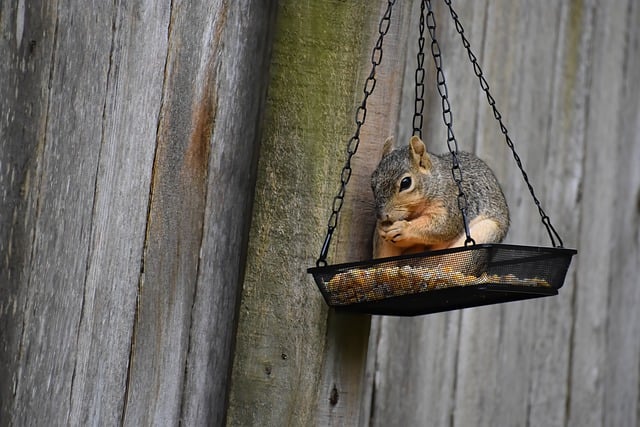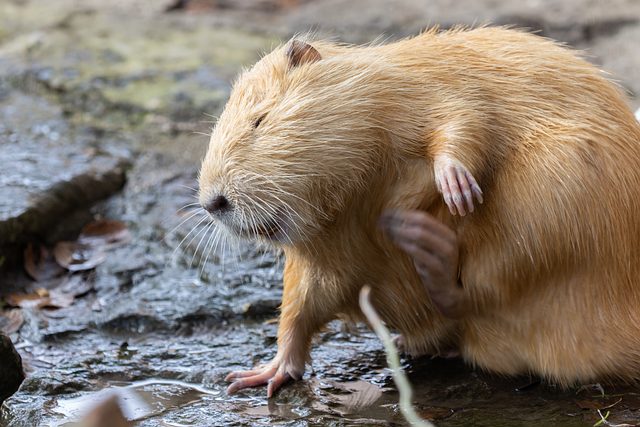Seasonal Rodent Surge in Catalina Foothills: A Guide to Effective Control for Tucson Homeowners
In Tucson's Catalina Foothills, seasonal fluctuations significantly impact rodent activity, wi…….

In Tucson's Catalina Foothills, seasonal fluctuations significantly impact rodent activity, with pack rats and deer mice particularly affected. During the monsoon months from mid-June to September, these rodents invade homes in greater numbers to escape the rain, necessitating rodent control measures for Tucson residents. Year-round management is crucial due to Tucson's mild climate, which can lead to consistent rodent activity. Homeowners should seal entry points, maintain clean living spaces, and use traps or bait stations as part of a comprehensive strategy that includes exclusion techniques and sanitation practices. As temperatures change, rodents may look for warmer shelters, making exclusion even more critical during cooler periods. For effective rodent control in Tucson, it's recommended to consult professional pest control services that offer tailored solutions and expert advice to safeguard homes against these seasonal pests throughout the year.
Seasonal rodent activity in Catalina Foothills homes and neighborhoods presents a unique challenge for Tucson residents. As temperatures fluctuate, these critters adapt their behaviors, often seeking shelter within residential areas. This article delves into the patterns of such seasonal rodent movements and offers tailored rodent control solutions specific to Tucson’s environment. Understanding these patterns is crucial for effective management and ensuring the safety and comfort of both human and animal inhabitants. With the right strategies, homeowners can safeguard their properties against unwanted visitors.
- Understanding Seasonal Rodent Activity Patterns in Catalina Foothills Homes and Neighborhoods
- Effective Rodent Control Measures for Tucson Residents
Understanding Seasonal Rodent Activity Patterns in Catalina Foothills Homes and Neighborhoods

In the Catalina Foothills region, a understanding of seasonal rodent activity patterns is crucial for effective rodent control in Tucson. As the Sonoran Desert’s unique ecosystem influences local wildlife behavior, rodents such as pack rats and deer mice exhibit distinct seasonal cycles. During the monsoon season, from mid-June to September, these creatures often seek shelter indoors to escape heavy rainfall and flooding. Homeowners may observe an uptick in rodent infestations as they move into homes and neighborhoods to build nests and raise young. This influx necessitates proactive measures for rodent control in Tucson, particularly in areas with ample food sources like gardens or pet food.
Entering the cooler months of fall and winter, rodent activity may decrease slightly as they adapt to the drop in temperatures, conserving energy by staying warm in their nests. However, the mild climate of the Catalina Foothills can lead to year-round activity. It’s during this time that preventive rodent control measures become more important for Tucson residents. Sealing entry points, maintaining clean living spaces, and employing traps or bait stations can help mitigate the risks associated with these pests. Understanding the intricate relationship between seasonal changes and rodent behavior allows homeowners to implement targeted strategies for rodent control in Tucson, safeguarding both homes and the health of the local environment.
Effective Rodent Control Measures for Tucson Residents

In Tucson, Arizona, the unique seasonal patterns of rodent activity in areas like Catalina Foothills necessitate tailored rodent control measures. Homeowners and residents can effectively manage these pests by implementing a combination of exclusion, sanitation, and mechanical methods. Exclusion involves sealing entry points and maintaining tight-fitting doors and windows to prevent rodents from accessing homes. This is particularly important during the cooler months when rodents seek warmer environments. Sanitation practices, such as consistently removing food sources and proper waste disposal, reduce the attractiveness of properties to these pests. It’s crucial to keep kitchen areas clean, store food in airtight containers, and promptly dispose of garbage. Mechanical methods, including traps and bait stations, can be employed judiciously and strategically placed where rodent activity is detected. These control measures should be part of an ongoing integrated pest management (IPM) strategy to effectively mitigate rodent infestations in Tucson homes and neighborhoods. Professional pest control services in Tucson can provide guidance on the best rodent control Tucson practices tailored to each unique home environment, ensuring protection against these pests throughout the year.
Residents of the Catalina Foothills in Tucson can attest to the seasonal shifts in rodent activity, a natural yet sometimes challenging aspect of their environment. As detailed in this article, understanding these patterns is key to implementing effective rodent control measures tailored for Tucson. Homeowners are encouraged to adopt proactive strategies and stay informed on best practices for rodent prevention year-round. By doing so, they can maintain a harmonious coexistence with local wildlife and ensure the safety and cleanliness of their homes. Engaging in consistent maintenance and employing professional rodent control Tucson services when necessary remains paramount in safeguarding properties from these creatures.







